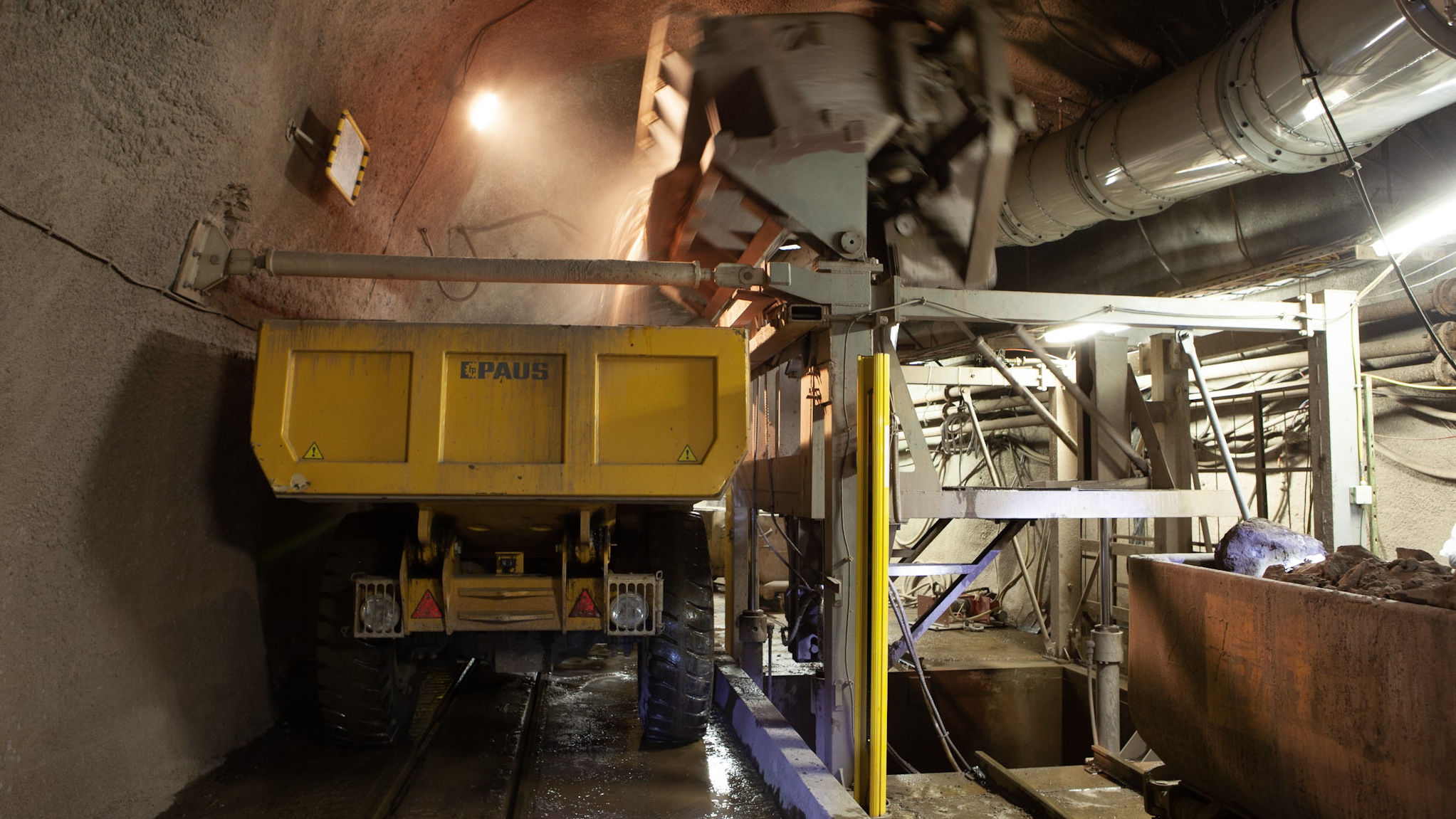Wismut GmbH is making former mining areas reusable

12.03.2024
Underground activity
After just a few hundred metres, I vow to start doing more exercise. I am breathing hard. It could be to do with the overalls and Wellington boots that I am wearing, not to mention the air pack that I am carrying. But let us be honest. I am simply unfit. A glance at my companions confirms it – in the dim light, they all look far fresher than I am feeling. And they have to be as working underground earns them their daily bread. We are 60 metres below ground in the Wismut adit, a project by Wismut GmbH.
Until 1990, the Soviet/German stock company Wismut was the world’s fourth largest uranium producer. When German reunification took place in 1991, it became Wismut GmbH, a federal-government-owned cleanup company responsible for making former mining areas reusable and restoring a healthy environment for people and nature. Examples of cleanup tasks include making mine workings safe and flooding them, water treatment, the disassembly and demolition of contaminated structures and buildings and the remediation of mine dumps. This huge overall task is divided into more than 1,000 individual projects, one of which is the connective adit between the Tiefer Elbstolln and the Dresden-Gittersee mine – known as the Wismut adit.
This project was first initiated in December 2005. In July 2003, water emerged in several places in Freital-Potschappel during the flooding of the Dresden-Gittersee/Bannewitz and Heidenschanze mine fields. The flooding was stopped and the water level lowered. The investigations that followed showed that to ensure the sustained safe discharge of flood water, the Wismut adit needed to be driven as a connection from the mine field to the Tiefer Elbstolln. The flood water will flow through this away from the mine fields to the Tiefer Elbstolln and from there into the Elbe River. This solution will permanently maintain the flood water at a non-critical level.
The work on the Wismut adit began in 2007. By January 2008, the 370 metre access ramp had already been fully driven. Four years later, after driving 1,910 metres to the west, the adit broke through into the Tiefer Elbstolln. The drive forward another 1,000 metres to the east to the Dresden-Gittersee/Bannewitz mine field will be completed in the second half of 2014.
Our route into the depths of the Wismut adit takes us down the ramp. This is wide enough for use by a dump truck, which transports tailings to the surface. With a 16 per cent gradient, my legs pretty much take me down the slope of their own accord. Once in the adit, I am amazed at the sheer dimensions. The adit profile is 3.5 by 3.5 metres and wide enough for the vehicles used to pass by each other. We first head several hundred metres to the east, following the rails along which the wagons (known as ‘tubs’) transport the rock to a lifting and tilting device.
“This device was custom designed for us”, project manager Volkmar Lachmann revealed. A tub filled with 300 to 400 kilograms of rock drives onto a platform. This is then lifted by three hydraulic cylinders. Two further cylinders tip the tub to unload the contents into the adjacent dump truck. In addition to these two machines, a tunnel drill and a side-tipping loader with a chain drive are also used in the Wismut adit.
In 1998, a framework agreement was entered into between Wismut GmbH and HANSA‑FLEX, which has since been continually extended and, in part, expanded. The nearby branches supply Wismut with the spare hose lines for its many different projects. The mobile rapid hydraulic service vehicles are available for emergencies.
The HANSA‑FLEX branch in Heidenau fulfils all the needs that arise in relation to work on the Wismut adit. “We supply a broad range of products, from pre-assembled hose lines through industrial hoses and services from the mobile rapid hydraulic service to cylinder repair”, summarised HANSA‑FLEX field sales technician Jürgen Rüger. Often, the customer needs to receive spare part orders the very next morning. “We are delighted to have found a service provider that responds quickly when we need help. That is important as we are working to a tight schedule and cannot afford periods of downtime. The fact that HANSA‑FLEX can also repair cylinders for us is a further plus point”, stated Volkmar Lachmann in praise of the working relationship.
After the tour, we head back up above ground. The 16 per cent gradient is certainly hard on the legs. The visit was both strenuous and interesting – and most definitely gave me huge amounts of extra respect for the miners. Good luck!
Learn more
- 12.03.2024
Drilling instead of digging
The horizontal drilling rigs from AT-Boretec work with hydraulicsFind out more - 12.03.2024
Gearing up for an underground attack
The Gotthard Tunnel: the building project of the centuryFind out more - 10.03.2024
60 years of HANSA-FLEX
Bremen businessman Joachim Armerding founded the HANSA‑FLEX company 60 years ago in the garage of his house near Bremen. His business concept was timely, his motto as simple as it was ingenious: Fulfil the wishes of your customers more rapidly, more flexibly and more fully than all your competitors and never forget the human side and enjoyment…Find out more














































